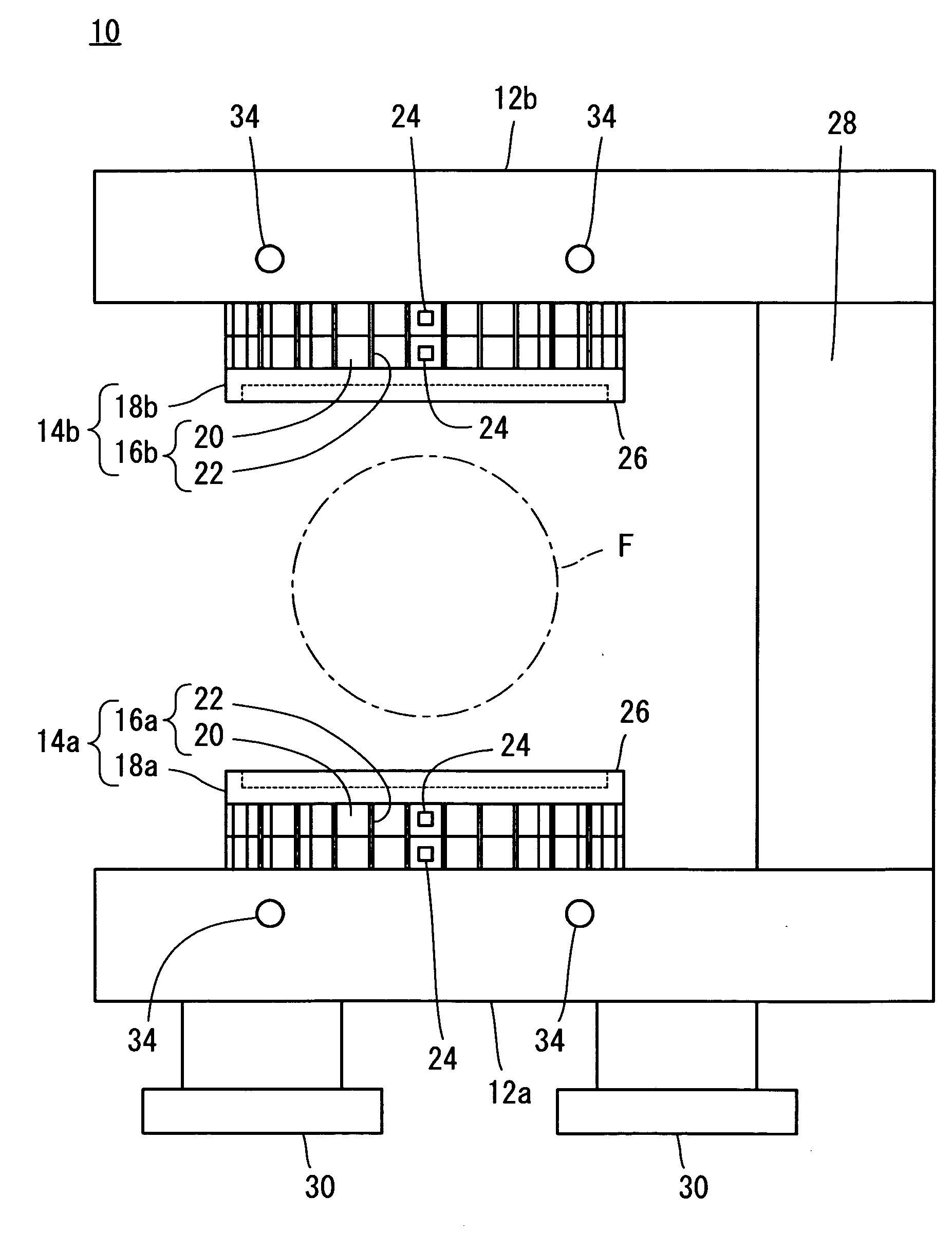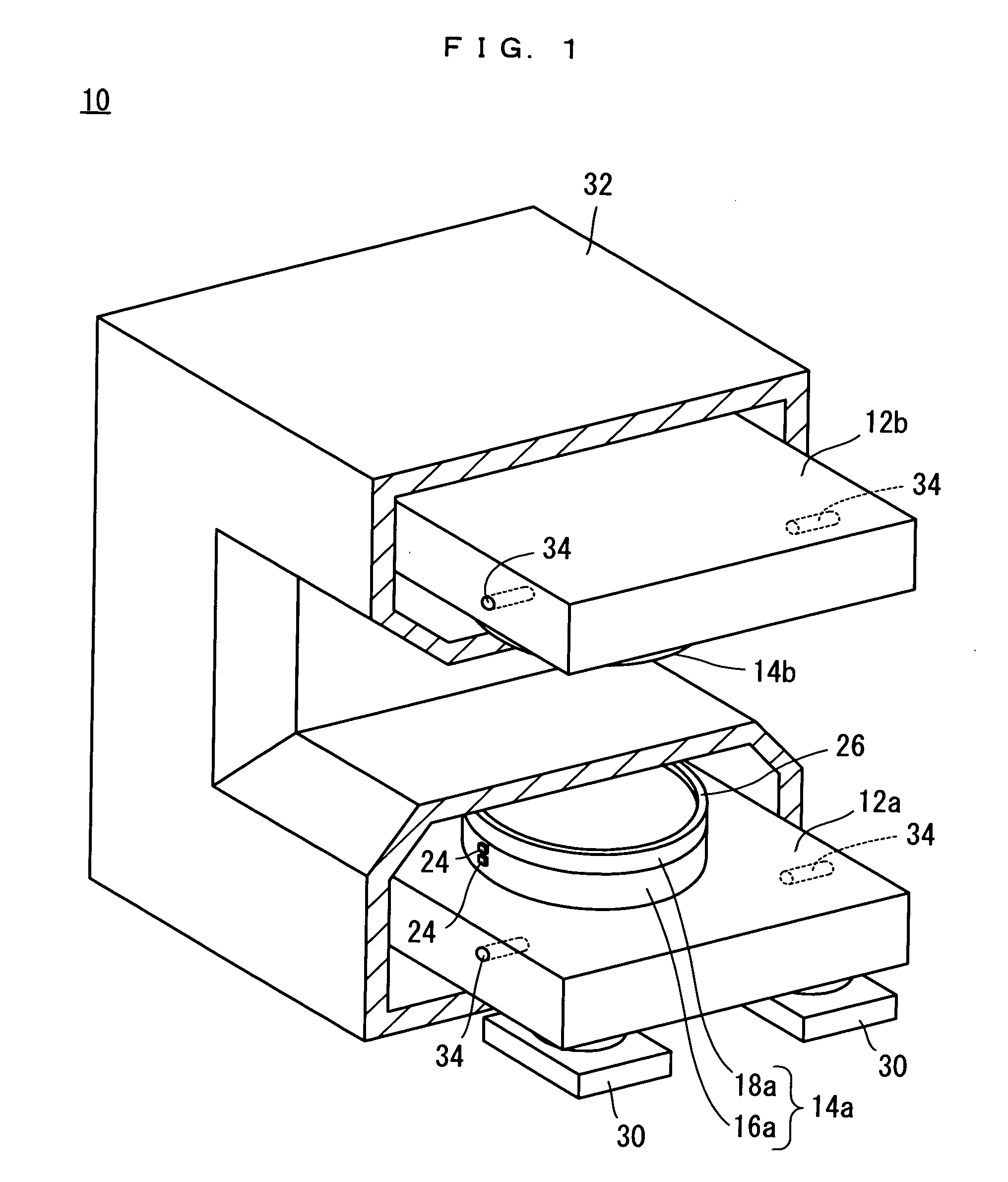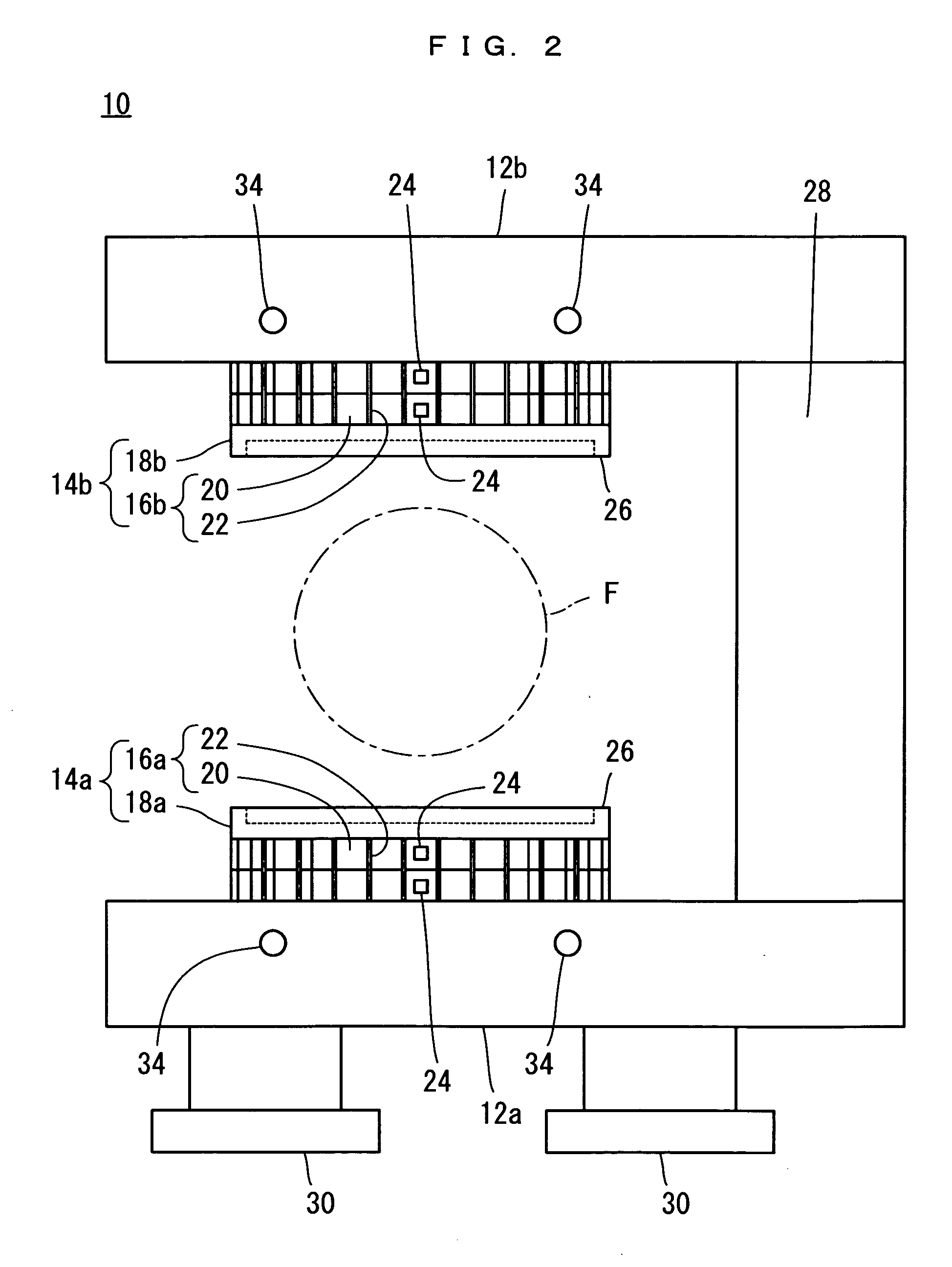Magnetic Field Generator
a generator and magnetic field technology, applied in the field of magnetic field generators, can solve the problems of inefficient transfer of inability to create inability to efficiently transfer heat generated by the surface heater, so as to achieve the effect of generating a uniform magnetic field of a desired intensity, delivering heat more quickly and efficiently, and facilitating heat conductance to the permanent magnet group
- Summary
- Abstract
- Description
- Claims
- Application Information
AI Technical Summary
Benefits of technology
Problems solved by technology
Method used
Image
Examples
Embodiment Construction
[0069]Hereinafter, embodiments of the present invention will be described with reference to the drawings.
[0070]Referring to FIG. 1 and FIG. 2, a magnetic field generator 10 according to an embodiment of the present invention is a magnetic field generator for an open type MRI apparatus, and includes a pair of plate yokes 12a, 12b opposed to each other with a space in between and a pair of magnetic poles 14a, 14b.
[0071]The magnetic pole 14a includes a permanent magnet group 16a and a pole piece 18a. Likewise, the magnetic pole 14b includes a permanent magnet group 16b and a pole piece 18b. The permanent magnet group 16a is fixed on a surface which is faced to the plate yoke 12b, of the plate yoke 12a. Likewise, the permanent magnet group 16b is fixed on a surface which is faced to the plate yoke 12a, of the plate yoke 12b. The pole piece 18a is fixed on a surface which is faced to the permanent magnet group 16b, of the permanent magnet group 16a. Likewise, the pole piece 18b is fixed...
PUM
 Login to View More
Login to View More Abstract
Description
Claims
Application Information
 Login to View More
Login to View More - R&D
- Intellectual Property
- Life Sciences
- Materials
- Tech Scout
- Unparalleled Data Quality
- Higher Quality Content
- 60% Fewer Hallucinations
Browse by: Latest US Patents, China's latest patents, Technical Efficacy Thesaurus, Application Domain, Technology Topic, Popular Technical Reports.
© 2025 PatSnap. All rights reserved.Legal|Privacy policy|Modern Slavery Act Transparency Statement|Sitemap|About US| Contact US: help@patsnap.com



